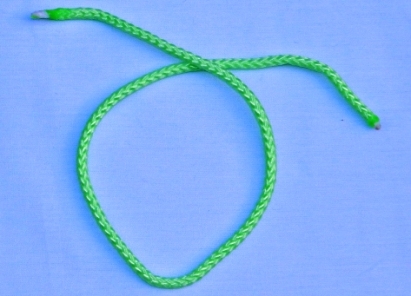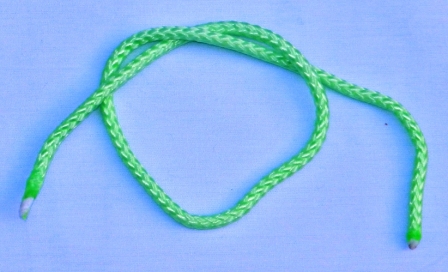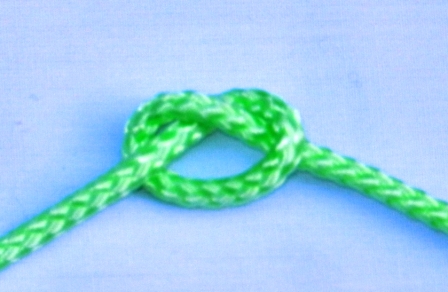Overhand Knot
The overhand knot is a basic knot that everyone is familiar with. Similar in style to the first cross over knot used when tying your shoes. Instead of drawing the string against the shoe, you draw it up tight against itself. Understanding how to tie this knot and its foundational role is essential to understanding many other knots.
Tying the Overhand Knot

This overhand knot demonstration uses a short piece of line. The first step is to loop the working end over the standing line to form a loop. Assume that right end of this line is attached to your fishing reel, and the end looped over the top of the other line is the working end.

Next, take the working end of the line and pass it under the standing part of the line and through the loop. At this point envision that you can move the knot one way or the other, closer the standing end or you can cause the knot to be one or more inches from the working end.

The final step is to tighten the knot. This knot can be used to prevent the end of a cut rope from ravelling. It also can be used as part of another fishing knot to prevent the line from slipping through a second knot. The tighter you pull the tighter the knot will be.
Understanding Knot Terms
There are several terms used when describing tying fishing knots, marine knots, and other types of knots. Two of the most common terms used when describing how to tie knots are:
- Standing End
- Working End
The working end is the end of the rope or fishing string that you are actually working with. You are usually not working with both ends of the fishing line. When tying your shoes you are in reality working with both ends of your shoe string so both ends would be considered working ends. With fishing line you normally have one end you are working with and the other end is usually fastened to the arbor, hook or lure. The standing end is the end of the line tied to the arbor. The standing part is the part of the line from the standing end to the knot. Remember these definitions when reviewing how to tie 10 favorite knots.
The Working End
When beginning to learn to tie fishing knots, you will need to learn to leave enough extra line on your working end to finish the knot. With practice you will learn to estimate this very closely. As you progress through tying the knot you will quickly learn to tell if you will run out of line on your working end. Sometimes you will need to just start over because you will not have started with enough extra line on the working end to finish the knot. The rope used in these pictures is of course much bigger than fishing line - as a result the knots are much bigger.
Knot Tying Resources
We are an Amazon Affiliate. If you purchase a recommended product we stand to earn a small commission from qualifying purchases. If you click on one of our recommended products and purchase a different product from Amazon we may also receive a small commission. These products do not cost you any more than what is posted. Our staff recommends items that we have personally owned, tested, researched or we have fished with trusted anglers who recommend them.
These four resources come highly recommended. We at PFT each carry the freshwater knot guide in our tackle. Several of us use the knot tying tool on the right. I have the knot tying book on my desk, but in addition have downloaded a knot tying app on my phone, which I use regularly.